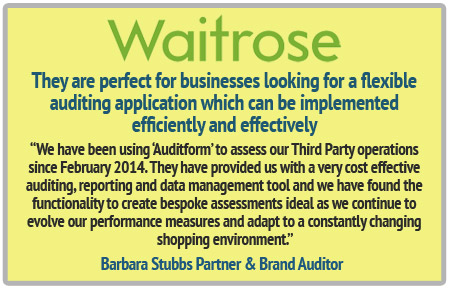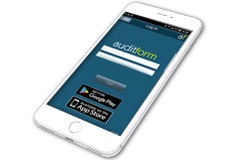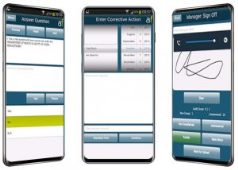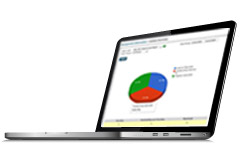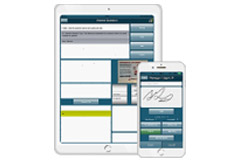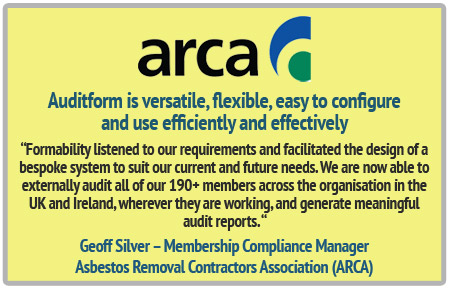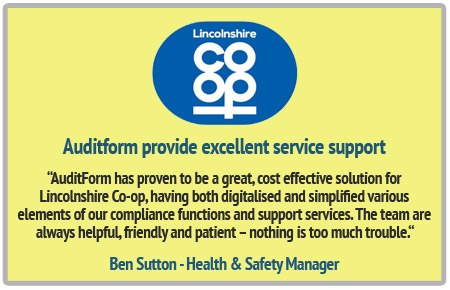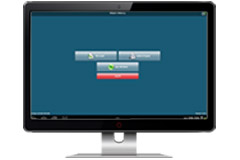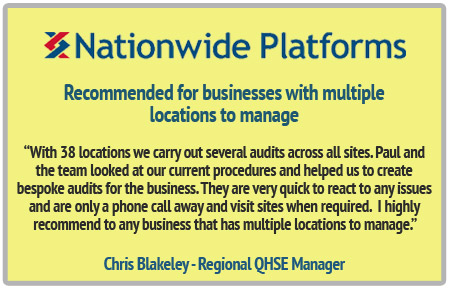Efficient Software for Audit Processes: Simplify Auditing Tasks
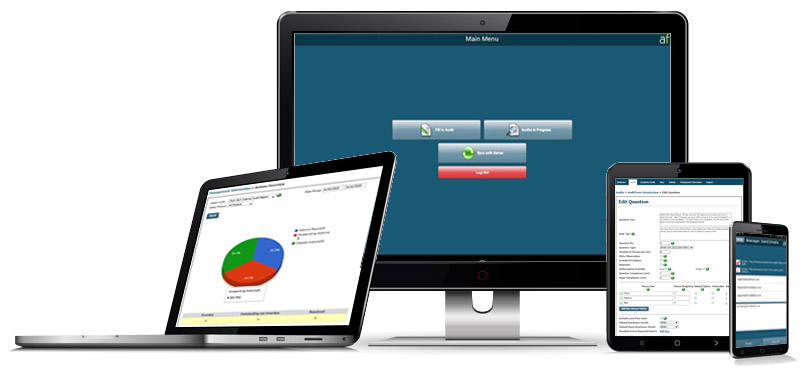
Transforming Auditing with Technology
In the intricate world of audit, software for audit processes stands as a beacon of innovation, fundamentally altering the landscape of compliance and oversight. These sophisticated tools equip auditors with auditing software for auditors that streamlines everything from audit evidence collection to audit reporting software, drastically reducing manual effort and introducing a level of accuracy unattainable through traditional methods. The transformation is palpable, as audit productivity software becomes increasingly indispensable within this domain.
The advent of paperless audit software and remote audit software in particular, has reshaped the notion of auditing, breaking the chains that once bound auditors to hefty binders and localized assessments. Risk and audit management software now enable seamless collaboration, data analysis and visualisation, and maintain a real-time pulse on audits, setting a new standard for operational efficiency.
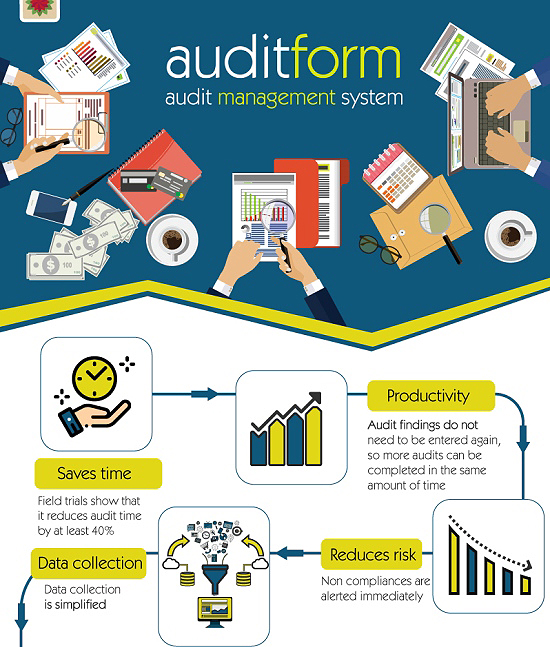
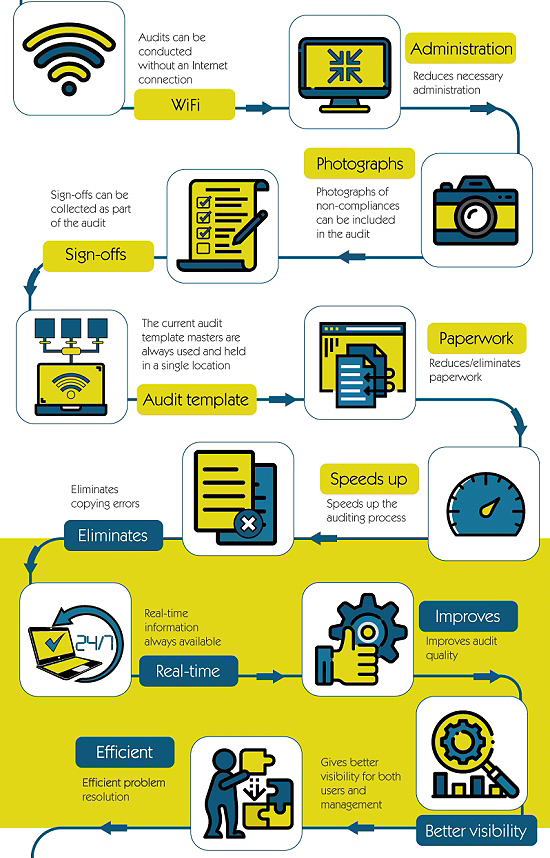
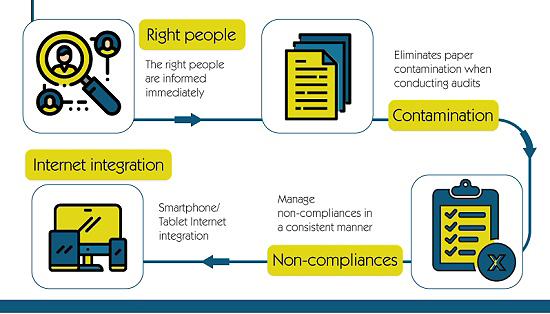
Upgrading Evidence Collection
In the realm of auditing, the meticulous accumulation of evidence is pivotal. Audit productivity software expedites this process by enabling auditors to capture, store, and manage documentation with precision and ease, thereby enhancing the robustness of the audit trail.
Leveraging audit evidence collection through dedicated software minimises errors and compresses timelines. Features such as automatic document retrieval and intelligent organisation equip auditors with a “digital briefcase”. This is transformative, allowing for sophisticated, swifter audit outcomes with a reduced likelihood of oversight or omission.
Audit software turns weeks of work into days through advanced evidence aggregation and management.
When audit evidence is systematically catalogued, it not only secures information integrity but also simplifies regulatory compliance. Auditors using audit control software can swiftly navigate a wealth of data (akin to the turning of pages in a book), swiftly identifying discrepancies and ensuring nothing is overlooked. The resulting evidence repository is indispensable inventory for comprehensive and transparent audit reporting.
Improving Audit Report Generation
The potency of audit report software lies in its ability to streamline the generation of sophisticated audit reports.
- Audit planning tools and data analytics significantly reduce manual compilation efforts.
- Collaboration features enhance the coalescence of multi-auditor findings.
- Compliance management functionalities ensure reports adhere to regulatory standards.
- Automation of data visualisation yields clear, impactful insights.
Integration of these components within audit report software transforms the reporting phase, expediting delivery and enriching report quality.
Moreover, the robust audit trail and documentation system fosters comprehensive report accuracy, indispensable for stakeholder assurance.
Paperless Audits: The Future is Digital
Embarking on the digital route, paperless audit software offers an eco-friendly and efficient approach to auditing tasks, markedly reducing reliance on physical documentation. Not only does it streamline the auditing process, allowing auditors to manage and review substantial amounts of data with ease, but it also significantly mitigates the risk of data loss and paper-related inefficiencies.
In this era of digital transformation, the advent of paperless audit software promotes a step-change in our methodological paradigm. By storing all documentation electronically, auditors benefit from instantaneous access and powerful search capabilities, thus facilitating rapid audit evidence collection and review. Furthermore, this environmental consciousness dovetails with a heightened security framework, as advanced security and access controls hinge on stringent digital protocols far beyond the protections offered by a physical filing cabinet.
Collaboration Features in Audit Software
Adopting sophisticated audit software equips teams with advanced collaboration features, essential for the efficient execution of complex audit tasks.
- Real-time data sharing enables seamless exchange of information among audit team members.
- Commenting and annotation tools facilitate dialogue within documents and audit evidence, fostering clear communications.
- Access control mechanisms ensure sensitive information is shared with the appropriate personnel, upholding stringent security protocols.
- Integrated messaging systems foster quick communication channels without the barriers of disparate email threads.
- Task assignment and tracking functionalities allow for equitable workload distribution and oversight of progress. By harnessing these collaborative tools, auditors can ascertain a cohesive and transparent approach to their work – a cornerstone of superior audit practices. Within a digital landscape, these features empower teams, allowing for a dynamic synergy that transcends traditional, siloed efforts, and elevates overall audit productivity.
Secure Access Control Systems
Effective audit software must incorporate robust security measures. The importance of having rigorous access controls in place cannot be overstated, guarding against unauthorised access to sensitive data.
As the digital ecosystem expands, so too does the potential for cybersecurity threats. It’s imperative, then, that audit software for auditors is fortified with advanced access control mechanisms. These systems curtail the risk of data breaches and ensure only validated users can approach sensitive audit information. Access controls form the bedrock of trust in the audit process, enabling secure collaboration and data integrity through the principle of least privilege.
In the context of audit productivity software, these access control systems must offer flexibility as well as security. They should accommodate the diverse roles within an audit team and apply appropriate permissions automatically. Furthermore, thorough audit trails and documentation are requisite for tracking access and ensuring accountability, as they provide incontrovertible records of who accessed what and when.
Lastly, exquisite design in access control is crucial for audit inspection software, particularly in environments where transparency and compliance are paramount. This should include managing permissions for both internal stakeholders and external partners with precision. An optimal system facilitates seamless permission adjustments as the audit progresses, enabling efficient response to evolving needs while maintaining stringent security and access controls. Through this, organisations attain a harmonious balance between stringent security measures and the agile demands of audit workflows.
The Advantages of Specialised Auditing Software
Employing specialised software for audit processes significantly enhances efficiency and accuracy. Such software consolidates data analytics for auditing, streamlines audit evidence collection, and automates audit workflow. This digital approach minimises human error and expedites the audit planning and scheduling tasks, embodying a transformative move from conventional, paper-based systems.
In addition to streamlining tasks, advanced auditing software for auditors delivers a comprehensive suite of features such as continuous auditing, real-time auditing capabilities, and sophisticated risk assessment tools. It also particularly benefits sectors like non-profits, where specialised auditing software for nonprofits tailors the auditing process to their unique regulatory and financial landscapes. Moreover, audit software iphone applications extend the convenience of mobility, enabling inspectors and auditors to conduct audit and inspection software-powered tasks directly from their smartphones, heightening audit productivity software benefits through enhanced accessibility.
Auditing Software for Nonprofits
Nonprofit organisations operate within a unique realm, necessitating auditing solutions that align with their specific needs and constraints. Auditing software for nonprofits is specifically designed to address these sector-specific challenges, providing features that help streamline financial reporting and ensure compliance with regulatory requirements.
Such software often includes tools for audit planning and scheduling, which are crucial for maintaining the fiscal rigour expected of nonprofits, while simplifying the complexities associated with meeting various compliance standards. Enhanced audit trail and documentation capabilities, coupled with compliance management features, give nonprofits greater control over their auditing processes and improve overall transparency and accountability.
Moreover, these digital solutions are developed with an understanding of the budgetary restrictions typical of nonprofit organisations. Cost-effective audit reporting software and paperless audit software options aid in reducing overheads, as they curtail the need for excessive physical storage and streamline audit-related communications. This has the added advantage of fostering a more eco-friendly approach within the charitable sector.
Finally, auditing software for nonprofits can include collaboration features and compliance tracking, which are vital for teams often spread across various locations. As nonprofits aim to demonstrate their integrity and stewardship, such software empowers them to do so efficiently and effectively. It harnesses the power of data analytics for auditing, offering insights into performance and facilitating the prudent management of funds – an essential aspect for any organisation devoted to its mission and its beneficiaries.
Tailored Solutions for Business Audits
The versatility of business auditing software ensures customisation to each organisation’s unique landscape. Sophisticated audit program software promotes a nuanced approach to the multifaceted nature of business audits, integrating risk assessment tools and internal controls evaluation seamlessly into commonplace workflows. The significance of crafting a bespoke audit planning software can be seen in the delineation of tasks aptly suited to the company’s size, sector, and auditing needs.
Contemporary audit scheduling software simplifies the executor’s duty by automating reminders and coordinating deadlines, reflecting a keen understanding of the intricacies within the business auditing milieu. In the realm of audit productivity software, dynamic features for audit evidence collection and data analysis and visualisation are paramount, propelling auditors ahead by saving time and enhancing the quality of the audit output.
Business audits necessitate a robust framework, and company audit software often embodies a full suite of capabilities including performance tracking and metrics and compliance management. Notably, audit reporting software stands as a pillar within these frameworks, facilitating audit report generation that satisfies both regulatory reporting and innovative visual communication of findings.
The strategic implementation of audit control software is instrumental in maintaining a vigilant stance on the firm’s regulatory obligations. Features encompassing security and access controls in parallel with real-time auditing capabilities allow for a rigorous yet flexible approach to safeguarding data integrity and ensuring regulatory compliance.
It’s crucial to mention the expansion of remote audit software and its implications for contemporary audit practices. Adaptations of audit and inspection software, including audit software iPhone applications, typify the direction of technological enablement, bringing portability and immediacy to risk and audit management software solutions.
Optimising Risk and Compliance Management
In the realm of auditing, risk and audit management software is pivotal, encapsulating an integrative approach that aligns with auditors’ needs, ensuring precision and comprehensiveness.
By adopting advanced audit productivity software, organisations enhance their ability to monitor compliance tracking and risk assessment tools. This aligns with continuous auditing principles, leading to heightened readiness and proactive regulatory compliance.
The merging of “real-time auditing capabilities” with “compliance management” systems renders a robust defensive stance against non-compliance risks.
Real Time Auditing Capabilities
The advent of real-time auditing capabilities has revolutionised the auditor’s toolkit, offering unparalleled immediacy in capturing and analysing transactional activity, thus fostering a more dynamic and responsive audit process and avoiding the taxation of traditional systems. Advanced audit productivity software now integrates these capabilities, enabling auditors to access and review data as it occurs, markedly reducing the latency in the assessment of financial records and operations.
Such instantaneous access to data empowers auditors with the ability to perform continuous auditing. This transforms the auditing paradigm from periodic reviews to ongoing oversight, strengthening the assurance process and providing more timely insights into the organisations’ financial activities.
Moreover, these real-time systems automatically collect and timestamp audit evidence collection, ensuring the integrity and reliability of the data. With inherent audit trail and documentation capabilities, auditors can rely on the authenticity of the information recorded by the audit control software.
Enhanced by data analytics for auditing, real-time monitoring allows auditors to employ sophisticated tests and queries, thus facilitating a more nuanced and thorough exploration of a company’s financial landscape. This, coupled with data analysis and visualisation features, enables the presentation of complex data in an accessible format, bolstering both the audit process and stakeholder communication.
Implementation of such systems streamlines audit workflow automation, reduces manual entry errors, and optimises overall efficiency. These benefits are particularly notable in audit planning and scheduling, where precision and coordination are paramount. Through seamless integration, real-time capabilities ensure that audit planning is consistently informed by the most current data.
Ultimately, the advancement of real-time auditing capabilities enhances auditors’ capacity to provide valuable, timely business insights. Leveraging this form of audit program software, businesses can establish stronger internal controls evaluation and adapt more swiftly to any fluctuations within the regulatory landscape.
Progressive Data Analytics Tools
Advanced data analytics tools offer auditors unparalleled insights into financial transactions and records. These tools deploy sophisticated algorithms that dissect and analyse large volumes of data, highlighting anomalies and patterns that warrant further investigation.
Leveraging these tools escalates audit accuracy and integrity. They are indispensable for conducting thorough and robust audits.
By utilising advanced data analytics tools, auditors benefit from a strengthened capacity to scrutinise complex datasets. This provides them with the agility required to navigate the evolving landscape of financial compliance, empowering them to make defensible audit decisions rapidly.
In an era rank with voluminous and varied data sets, advanced data analytics tools become the linchpin of successful auditing operations. With the integration of machine learning and artificial intelligence, auditors can now predict potential compliance issues and navigate the labyrinth of data with greater foresight. This manifests as heightened efficacy in identifying risks and ensures precision in financial reporting, positioning these tools as critical to the fabric of contemporary auditing practices.
Free Trial: Try Before You Buy
Before committing to a software solution, it’s always a good idea to try it out and see if it meets your specific needs. Many software providers offer free trial periods, allowing you to test the software’s capabilities and determine if it aligns with your requirements. During the trial period, you can explore the software’s features, assess its user-friendliness, and evaluate its compatibility with your existing systems.
Best Software for Audit: Pricing Options
When choosing software for audit, it’s important to consider the pricing options available. Different software providers offer various pricing models, such as subscription-based plans or one-time purchases. It’s crucial to assess your budget and requirements to find the best pricing option that suits your organization’s needs. Additionally, consider the scalability of the software, as your auditing needs may evolve over time.
Download Software for Audit: Get Started Today
Ready to simplify your auditing processes? Downloading software for audit is a straightforward process. Simply visit the software provider’s website, navigate to the download section, and follow the instructions provided. Ensure that your system meets the software’s minimum requirements to ensure optimal performance.
Use Your Own Data and Take Auditform For A FREE Test Drive !
Get a “hands-on” introduction to Auditform’s functionality and get a real feel of what it’s like to use our app software for FREE.
Then use our software and interact with Auditform’s easy to use functions. It’s a great way to get a feel for how Auditform can benefit your organisation, ensuring you make an informed decision.

Helpful Insight & Development

Unrivalled Support

20 Year Successful Track Record
Happy Market Sector Clients
We Have Tailored Our App Very Economically To Meet The Specific Needs Of Many Different Organisations Around The World
Construction

Facilities Management

Inspection

Retail

Transportation

Engineering

Food Processing Safety

Manufacturing

Health & Safety

Consultancy
Other Articles
Effective Audit Systems Software for Seamless Auditing Processes
Audit Management Software, Efficient Solutions at Your Fingertips
Top Audit Tracking Software for Efficient Workflow Optimization
Best Audit Software Tools for Efficient Auditing
Top Online Audit Software for Effective Management and Compliance
Audit Compliance Software: Essential Tools for Reporting
Top External Audit Software Solutions in the UK
Internal Audit Software For Effective Streamlined Operations

